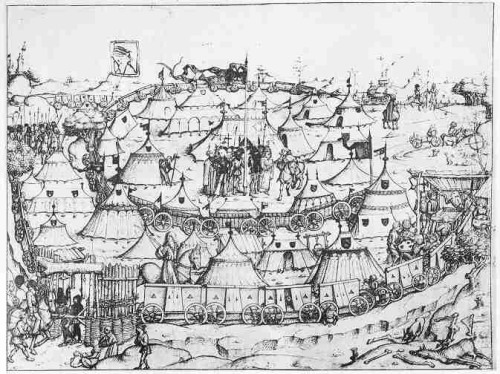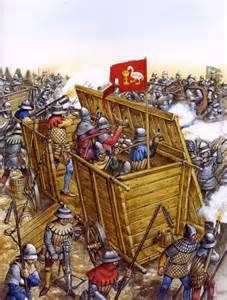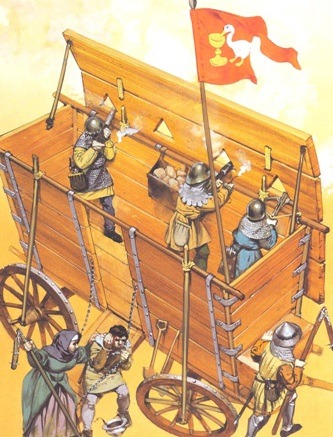Wagenburg Tactics and the Hussite War Wagon,In the early 15th century a Bohemian (Czech) priest name
Wagenburg Tactics and the Hussite War Wagon,In the early 15th century a Bohemian (Czech) priest named Jan Hus began to speak out against the Catholic Church while preaching reform and an end to church corruption. In 1415 Hus was excommunicated, arrested, and burned at the stake as a heretic. While speaking out against the church, Hus had become very popular in Bohemia and parts of Poland, starting a pre-Protestant Reformation movement that called itself the Hussites. What resulted from Jan Hus’ execution was a nationwide rebellion as the Hussites overthrew their Catholic rulers and openly revolted against the Catholic Church. Between 1419 and 1434 the Hussites fended off 5 anti-Hussite Crusades ordered by the Pope. The Hussities should have been easily crushed, being primarily composed of peasant soldiers and militia, and always outnumbered. In contrast, Catholic forces often were composed of professional soldiers, mercenaries, and knights, among them the feared Teutonic Knights of Germany. However the Hussities held fast and beat off every assault, forcing the Church to compromise in 1436. Much of their success was due to new technology, and a new tactic called “wagenburg”, developed by the Hussite general Jan Ziska. Known as one of the few military commanders to never be defeated, Ziska developed a strategy using heavily armed and armored war wagons. Each Hussite war wagon was armored and enclosed to protect its crew from enemy attack while heavily armed with crossbowman, cannon, and soldiers wielding hangonnes (primitive muskets). When the Hussites made contact with the enemy, they would circle their wagons and chain them together, forming an impromptu heavily fortified position. When the enemy would charge, the Hussites would mow them down with their crossbows, guns, and light cannon from small ports in their wagons. Soldiers armed with pikes and long flails would also stand on battlements on top of the wagons to fend off any knights and soldiers that survived the successive Hussite volleys of death. When the enemy finally broke ranks and retreated, the Hussites would charge from their defensive positions and finish them off.During the Five Anti-Hussite Crusades the Hussites were outnumbered at least three to one or four to one, sometimes even five to one or more. In each crusade the Hussites totally wrecked their enemies, sending them retreating in panic and pissing their armor. A classic example of this was the Battle of Vitkov Hill, where 12,000 Hussites under the command of Jan Ziska defeated a force of 50,000 - 100,000 men under the command of Holy Roman Emperor Sigismund and the King of Hungary. The Hussites sent their enemy fleeing in panic, chasing them into the Vlatava River where many would drown.The Hussite Wars came to an end in 1434 with a civil war between Hussite factions in Bohemia. A peace agreement between the Catholic Church and the Hussites was signed on July 5th, 1436.Interesting fact: In 1430 Joan of Arc dictated a letter to the Hussites threatening to lead a French anti-Hussite Crusade if they didn’t return to the Catholic faith. She was captured by the English before she could organize the crusade. -- source link
Tumblr Blog : peashooter85.tumblr.com
#history#hussites#battle tactics#wagenburg#wagenburg tactics#jan ziska#jan hus#religion



